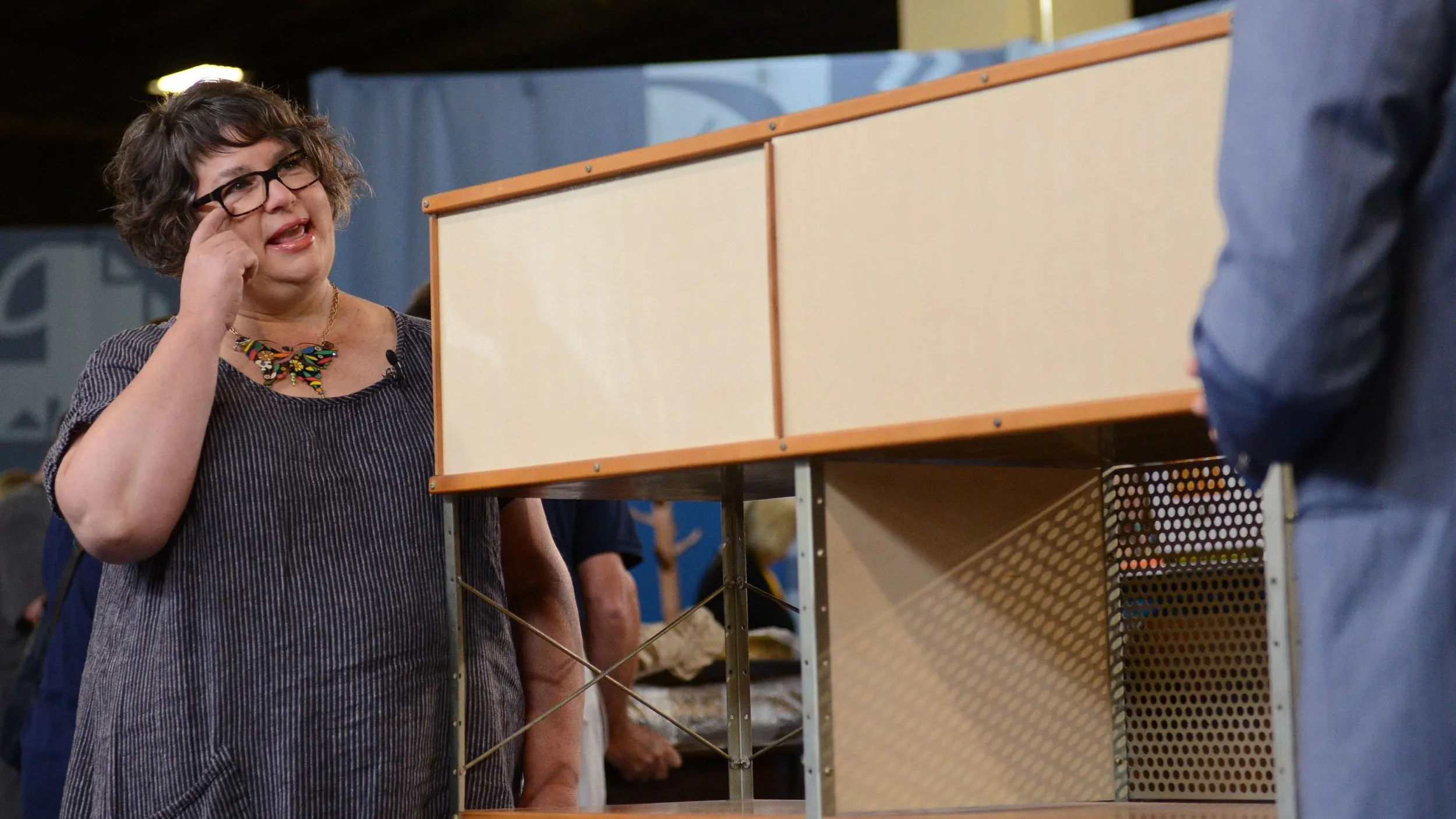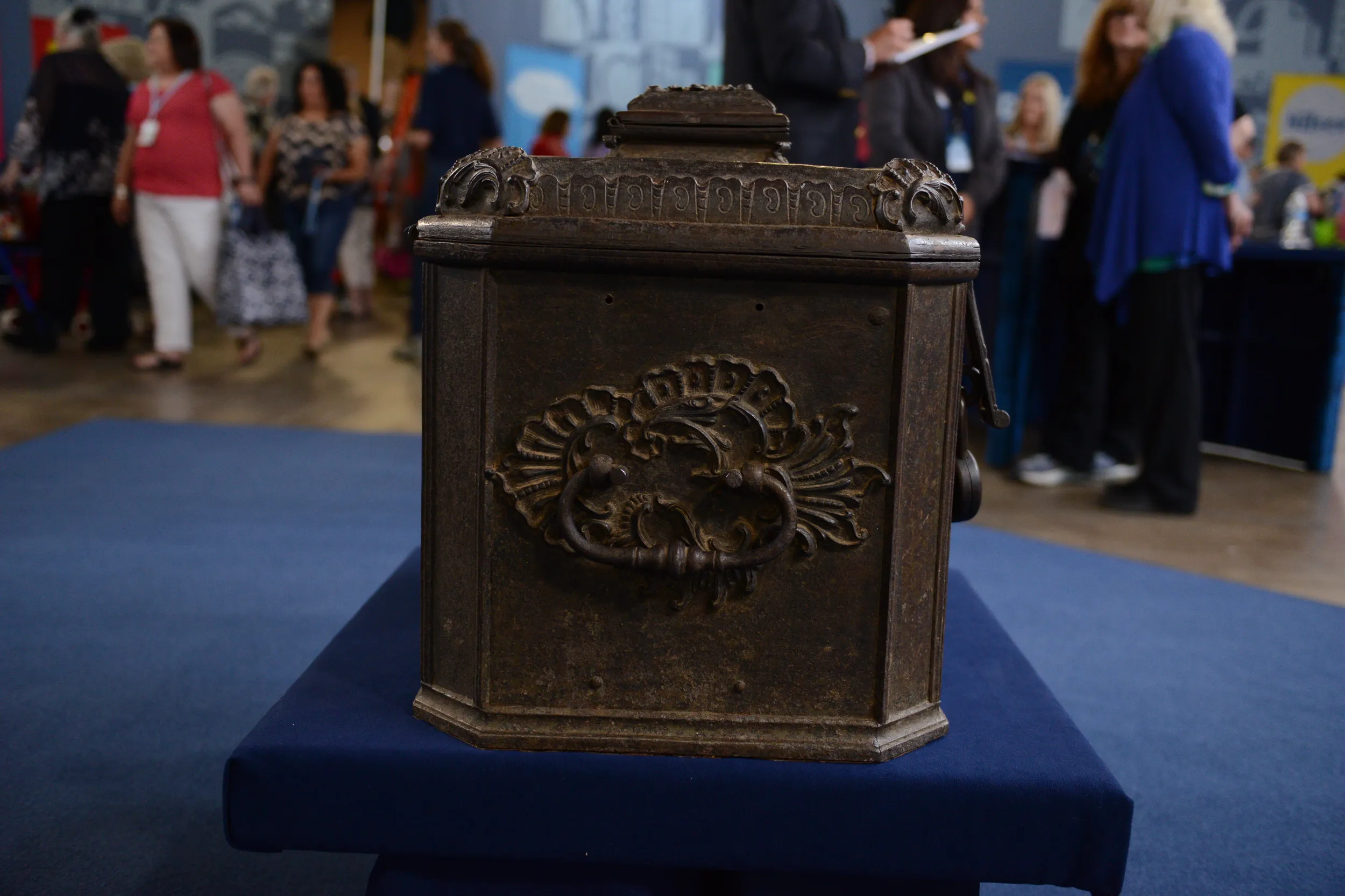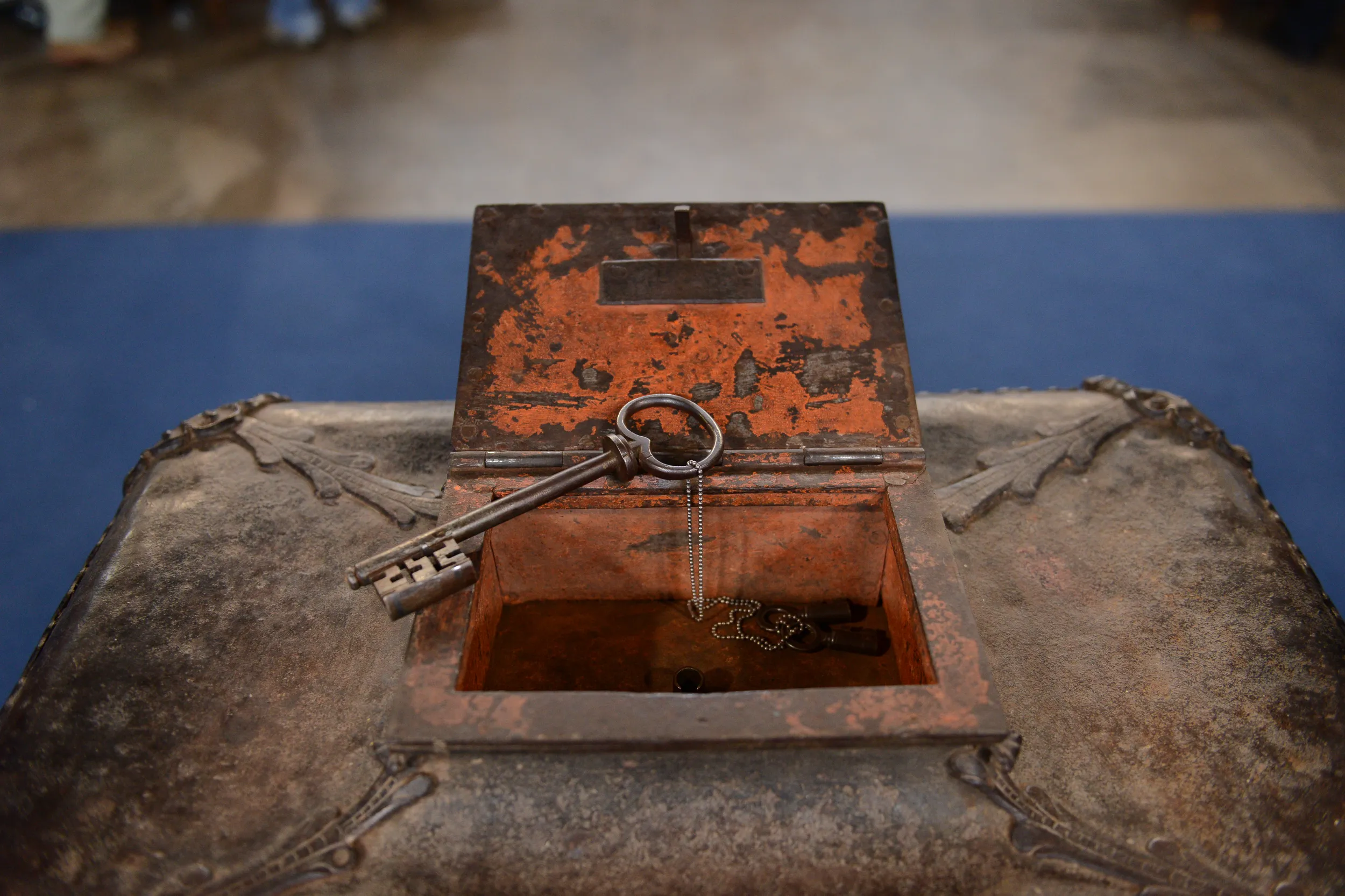GUEST: I brought you a 16th century metal-clad Spanish armada chest.
APPRAISER: The term "armada chest" is one of those terms that gets applied to antiques like this. There may be some oral tradition that linked, at one point,
one of these chests to a ship in the Spanish armada and maybe that nickname stuck, because there's no real evidence that these chests had anything to do with the Spanish armada. Tell me the story of how it came to you.
GUEST: My dad was in the military, and after World War II, he was stationed in Salzburg, Austria.
APPRAISER: Okay.
GUEST: He was also an artist, and he enjoyed antiques and collector items. And he met an Austrian who told him that he could help him acquire a rare antique. He did so a year later, after 1949, and this chest is supposed to have come from Maria Theresa's palace, the Schönbrunn Palace in Vienna, Austria.
APPRAISER: What was paid for it, do you know?
GUEST: I don't have any idea.
APPRAISER: There's a button on the side here, and that lifts up to reveal this incredibly massive key, very intricate in its design, that fits directly down into the
locking mechanism. We turn it, it's activated a very elaborate locking mechanism inside that we can reveal. I'm going to lift this up, and if you can help me...
GUEST: Okay.
APPRAISER: ...support it, we can bring these up. And we'll just put that at the top notch there. You can see this locking mechanism covered by this engraved brass cover. The latch in the middle here, a bolt there, a bolt here, and they continue around the side. We counted about 15 different bolts that are activated by one key. The locking mechanism is really, truly amazing. So this chest comes out of a tradition of German-made lockboxes made famously in Nuremberg, but also in Augsburg, Germany. Those blacksmithing traditions sort of came into their own in the late 16th and early 17th centuries, and this is probably a 17th century example covered in baroque embellishments. And let's go ahead and close, so I'll pick this up...
GUEST: And it'll just fall.
APPRAISER: Our supports will...
GUEST: Yeah, drop.
APPRAISER: Drop. And as you can see, there are padlocks on the front. These are probably 19th century padlocks. The elaboration really is something. They have these applied floral devices, this applied plate in the front meant to make you think that's where the lock is. This piece of cast iron is essentially sculpture. It would be desirable for more than just the fact that it's a German lockbox. In an auction, conservatively, I would say that it might bring $10,000 or $15,000.
GUEST: That's great.













